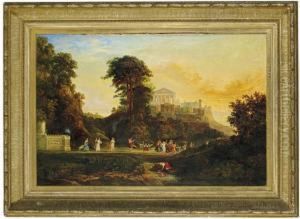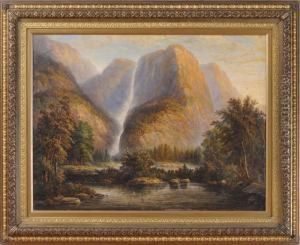Augustus Weidenbach Paintings
Augustus Weidenbach was a German-born artist whose work spanned various disciplines, including painting, engraving, and lithography. Born on March 25, 1821, in Naumburg, Saxony-Anhalt, Germany, Weidenbach was part of a period in European art that was characterized by a blend of Romanticism and early expressions of Realism. His education and early career in Germany provided him with a foundation in the traditional techniques of painting and printmaking, which he would later adapt and expand upon throughout his career.
In the mid-19th century, many European artists were drawn to the allure of new landscapes and opportunities abroad, and Weidenbach was no exception. His travels and subsequent works contributed significantly to the pictorial documentation of landscapes and natural history, particularly in Australia. After migrating to Australia in the 1850s, Weidenbach became known for his detailed and vivid landscapes, as well as his contributions to scientific illustrations, especially during expeditions and surveys.
His work in Australia is perhaps what he is best remembered for, especially his detailed illustrations of the Australian landscape, flora, and fauna, which were not only artistically significant but also valuable for scientific study and documentation. Weidenbach’s illustrations often accompanied scientific publications, helping to bridge the gap between art and science during a time when accurate visual representation was crucial to the understanding and classification of the natural world.
Augustus Weidenbach’s legacy is that of an artist who managed to encapsulate the beauty and specificity of the natural environment, making significant contributions to both the art world and the field of natural history. His work remains a testament to the role of artists in the exploration and documentation of the world’s landscapes and ecosystems during the 19th century. Weidenbach passed away on December 25, 1901, leaving behind a body of work that continues to be celebrated for its precision, beauty, and scientific value.

